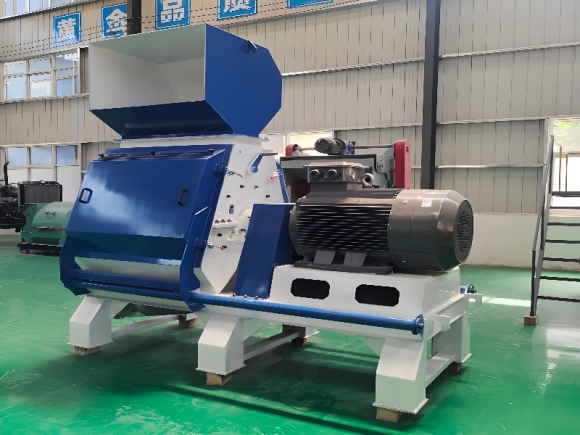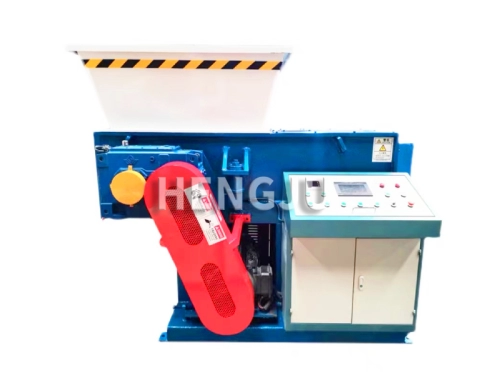Are you struggling to achieve consistent particle size in your feed production? Facing challenges with efficiently processing biomass for fuel? Or perhaps seeking the optimal wood grinding method for your pellet plant? Selecting the right grinding equipment is crucial for operational efficiency, product quality, and profitability. This guide, drawing on Hengju Machinery's [15 years] of expertise in particle size reduction technology, will walk you through everything you need to know about Teardrop Hammer Mills – a leading solution for feed, biomass, and wood grinding. We'll help you understand how they work, what factors to consider when choosing one, and why a Teardrop design might be the perfect fit for your needs. Our goal is to empower you to make an informed decision backed by industry knowledge and experience.
1. What is a Teardrop Hammer Mill?
Before diving into selection criteria, let's establish a clear understanding of this essential piece of equipment.
1.1 Working Principle: The Power of Impact and Design
A Teardrop Hammer Mill operates on the principle of impact grinding. Inside the grinding chamber, a high-speed rotor assembly swings multiple hammers. As raw material enters the chamber, these rotating hammers strike it repeatedly, breaking it into smaller particles. The material is also thrown against a durable, perforated screen lining the chamber wall. Particles small enough to pass through the screen openings exit the mill, while larger particles remain in the chamber for further grinding. The distinctive "teardrop" or "water drop" shape of the grinding chamber is specifically engineered to optimize material circulation, prevent material buildup in corners (dead zones), improve hammer impact efficiency, and ultimately lead to a more uniform grind and higher throughput compared to older, less optimized hammer mill designs.
1.2 Key Application Scenarios: Where Efficiency Matters Most
The versatility and efficiency of the Teardrop Hammer Mill make it invaluable across several industries:
Animal Feed Production: Essential for grinding grains like corn, wheat, barley, and soybean meal into consistent particle sizes critical for optimal animal digestion, feed conversion ratios (FCR), and pellet quality in poultry, livestock, and aquaculture feed.
Biomass Processing: Effectively reduces the size of various biomass materials such as straw, corn stalks, wood chips, and energy crops, preparing them for biofuel production (pellets, briquettes) or other conversion processes. Consistent particle size is key for downstream densification or combustion.
Wood Pellet Production: A crucial pre-processing step in wood pellet plants, grinding wood chips, sawdust, shavings, and forestry residues to the fine, uniform consistency required for high-quality pellet formation and durability.
2. How to Choose the Right Hammer Mill for Your Needs?
Selecting the ideal hammer mill involves careful consideration of several factors critical to your operation's success. Prioritize these elements based on your specific requirements:
2.1 Raw Material Characteristics & Required Throughput Capacity
This is arguably the most critical factor. Different materials behave differently during grinding. Consider:
Material Type: Is it fibrous (like biomass, wood) or more friable (like grains)? This impacts hammer design and rotor speed needed.
Moisture Content: Higher moisture generally makes grinding more difficult and energy-intensive.
Initial Size: The size of the material entering the mill affects the required power and mill robustness.
Capacity Needs: Define your target output in tonnes or pounds per hour. Choose a mill sized appropriately to meet peak demand without being excessively oversized (which wastes energy). Undersizing leads to bottlenecks.
2.2 Desired Final Particle Size & Grinding Efficiency
What level of fineness do you need?
Screen Selection: The size of the holes in the hammer mill screen primarily determines the maximum final particle size. A wide range of screen sizes should be available.
Uniformity: Teardrop designs excel at producing a more uniform particle size distribution, crucial for many applications like feed quality and pellet density.
Energy Consumption: Efficiency isn't just about throughput; it's about tonnes ground per kilowatt-hour (T/kWh). Look for designs (like the teardrop) and motor efficiencies that minimize energy costs.
2.3 Durability, Construction & Ease of Maintenance
A hammer mill is a workhorse; it needs to be tough and easy to maintain.
Build Quality: Assess the robustness of the housing, rotor, and shaft. Look for heavy-duty construction suitable for industrial use.
Wear Parts: Hammers and screens are consumables. Evaluate the material quality (e.g., hardened alloys, tungsten carbide tips for hammers), expected lifespan, and ease/cost of replacement.
Accessibility: How easy is it to access the grinding chamber for screen changes, hammer rotation/replacement, and general cleaning? Wide doors and user-friendly designs significantly reduce downtime.
2.4 Total Cost of Ownership & Return on Investment (ROI)
Look beyond the initial purchase price.
Initial Investment: Compare quotes, but ensure you're comparing mills with similar capabilities and build quality.
Operational Costs: Factor in energy consumption, wear part replacement frequency and cost, and maintenance labor.
Downtime Costs: A reliable, easy-to-maintain machine minimizes costly production interruptions.
ROI: Calculate the expected return based on increased throughput, improved product quality, energy savings, and reduced maintenance compared to older or less suitable equipment.
2.5 Supplier Reputation, Expertise & After-Sales Support
Choosing the right partner is as important as choosing the right machine.
Experience & Expertise: Does the supplier have proven experience in your specific industry (feed, biomass, wood)? Can they provide expert advice on selecting the right configuration?
Technical Support: What level of pre-sale technical consultation and post-sale support (installation assistance, troubleshooting, training) is offered?
Spare Parts Availability: Ensure timely access to critical wear parts like hammers and screens to minimize downtime.
Warranty & References: Check the warranty terms and ask for customer references or case studies to verify performance and reliability claims. A trustworthy supplier will be transparent.
3. Focusing on the Teardrop Hammer Mill: Why It's Often the Ideal Choice?
While various hammer mill designs exist, the Teardrop Hammer Mill consistently emerges as a preferred choice for demanding applications in feed, biomass, and wood grinding due to its inherent design advantages:
Enhanced Grinding Efficiency: The teardrop shape facilitates a smoother, more effective circulation of material within the grinding chamber. This maximizes the opportunity for hammer impact and efficient passage through the screen, often resulting in higher throughput with the same or lower energy consumption compared to basic cylindrical designs.
Superior Particle Size Uniformity: By eliminating "dead zones" where material can over-grind or bypass the main grinding action, the teardrop design promotes a more consistent impact process, leading to a narrower particle size distribution. This is critical for downstream processes like pelleting or for ensuring optimal nutrient absorption in animal feed.
Reduced Wear & Tear: Optimized material flow can lead to more even wear on hammers and screens, potentially extending their lifespan and reducing replacement frequency.
Versatility: The efficient design handles a wide range of materials effectively, making it a flexible asset for plants processing different feed formulations or biomass types.
For applications demanding high throughput, consistent quality, and operational efficiency, the Teardrop Hammer Mill represents a significant technological advantage. Explore how our specific models embody these benefits: Learn more about [Your Company Name]'s Teardrop Hammer Mills [Link to Your Product Page].
4. Why Choose Hengju Machinery's Teardrop Hammer Mills?
At [Your Company Name], we don't just sell machines; we provide reliable, high-performance grinding solutions backed by decades of industry leadership and a commitment to your success.
4.1 15+ Years of Specialized Experience & Expertise
We have been deeply involved in particle size reduction technology for over [15 years]. Our team possesses extensive knowledge of the unique challenges and requirements within the feed, biomass, and wood processing industries. This experience informs every aspect of our design, manufacturing, and support processes.
4.2 Advanced Product Features & Technological Edge
Our Teardrop Hammer Mills are engineered for excellence, incorporating features like:
High-strength alloy steel hammers with optional tungsten carbide tips for extended wear life
Dynamically balanced rotor assembly for ultra-smooth, low-vibration operation
Specific Feature Example 3, e.g., Wide, easy-access doors with safety interlocks for faster, safer maintenance
5. Frequently Asked Questions (FAQ)
Here are answers to some common questions about Teardrop Hammer Mills:
5.1 What types of materials can a Teardrop Hammer Mill process?
They are highly versatile and can effectively grind grains (corn, wheat, soy), oilseed meals, fibrous materials (straw, alfalfa, bagasse), wood chips, sawdust, shavings, and various other biomass feedstocks. Suitability depends on the specific model configuration.
5.2 What range of final particle sizes can be achieved?
The final particle size is primarily controlled by the screen hole diameter. Screens are available in a wide range, typically from under 1mm up to 12mm or more, allowing for fine, medium, or coarse grinding depending on the application requirements.
5.3 How often do the hammers and screens need to be replaced?
Wear life depends heavily on the abrasiveness of the material being ground, operating hours, and proper maintenance. Hammers often require rotation or flipping before needing full replacement. With proper operation, screens can last for hundreds or thousands of hours, while hammers might need attention more frequently. Hengju Machinery uses high-quality wear parts to maximize lifespan and can provide estimates based on your specific application.
5.4 What is the typical energy consumption?
Teardrop Hammer Mills are designed for efficiency, but consumption depends on the motor size (HP/kW), material type, moisture content, and target particle size. We engineer our mills to optimize throughput per unit of energy (T/kWh) and can provide specific energy consumption data for different models and applications.
5.5 Does Hengju Machinery offer installation guidance and after-sales support?
Absolutely. We offer comprehensive support, including technical consultation during selection, installation supervision or guidance, operator training, readily available spare parts, and ongoing troubleshooting assistance to ensure optimal performance throughout the life of your equipment.
Conclusion: Investing in the Right Grinding Technology
Choosing the right hammer mill is a critical investment impacting your entire production process. The Teardrop Hammer Mill offers proven advantages in efficiency, uniformity, and versatility for feed, biomass, and wood grinding applications. By carefully considering factors like capacity, particle size requirements, material characteristics, maintenance needs, and supplier credibility, you can select a machine that delivers long-term value.
As demonstrated by our [15 years] of experience, commitment to quality engineering [mention key strength like efficiency or durability], and focus on customer success, Hengju Machinery stands as a trusted and authoritative partner for your particle size reduction needs. We deliver not just equipment, but reliable solutions.






















